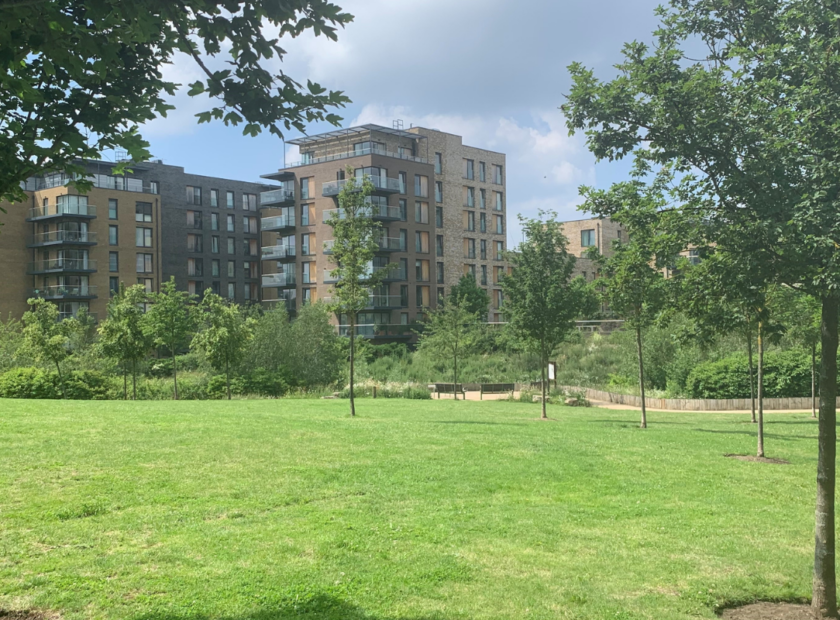The reforms to England’s planning system proposed in the ‘Planning for the Future’ White Paper provide no assurances that many of our most important habitats and species will be protected. This is particularly concerning at a time when Natural England has made it clear that it is no longer enough to protect habitats, we need to proactively work to increase their size and connectivity [1].
The White Paper proposes dividing England into three types of spatial planning zones: ‘protected’, ‘renewal’ and ‘growth’ areas. Protected areas would include Sites of Special Scientific Interest (SSSI), Areas of Outstanding Natural Beauty (AONBs), Green Belt and Conservation Areas in which development would be restricted. However, the term ‘protected’ is misleading: there is no mention of Local Nature Reserves, National Nature Reserves or irreplaceable habitats, such as ancient woodland. The ‘protected’ zone provides no additional protection to that in the National Planning Policy Framework (NPPF) [2] and development in these areas could still go ahead, decided on a case-by case basis.
‘Renewal’ areas would include existing built areas where smaller scale development is appropriate, such infill of residential areas. Growth areas would allow automatic planning permission, and be suitable for comprehensive development, including new settlements and urban extension sites. These areas could set a dangerous precedent for our most important habitats and species across the country, which are showing continued declines [3].
Modern data approaches like geospatial mapping, which the White Paper seeks for aiding decision making on these proposed areas, are inadequate in ecology, with our existing data and mapping information we have on our habitats and species remaining outdated and lacking in transparency.
Many of our important habitats and species could be missed due to inadequate data coverage and become open to development expansion without appropriate assessment. Furthermore, given that only one third of local planning authorities [4] have access to an ‘in house’ ecologist, this will mean important decision making will be made without those with the relevant skills. No amount of data, its resolution or quality can replace the need for site specific surveys with planning applications.
As an example, the implementation of biodiversity net gain, in which an essential stage early in the process is to undertake a site visit prior to development to assess habitats against the Defra’s biodiversity metric [5] for fulfilling the distinctiveness and condition of the habitat, can only be achieved by site survey. In order to guide informed decision making in line with the mitigation hierarchy it is vital that if anything environmental survey and assessment are strengthened, not weakened.
What could be done? Firstly, in line with Wildlife and Countryside Links proposals, the establishment of a Highly Protected Area and Nature Recovery Area tiers of protection [6], this could reinforce protection already afforded by site designations, and identify areas that are degraded and offer real opportunities for nature’s recovery.
In addition, if the planning system is going to support Natural England’s ambition to increase habitat coverage, every planning authority should have access to in-house ecologists and environmental planners. This will allow local authorities with the resources to access to richer information so that we can allow better decision making upfront which can create more certainty for developers and reduce costly delays, as well as helping to protect nature. Furthermore:
- The government should ensure that the Environment Bill [7] aligns with these planning proposals. This will ensure biodiversity net gain can be achieved in all areas, combining with the local nature recovery strategy, which in order to be functional must be strengthened so that this can be linked to planning or spending decisions.
- Integrate environmental considerations upfront in a more strategic manner by mapping out important habitats in advance and ensure this fulfills the goals set out in the 25-year environment plan. [8]
- Ensure that inventories, such as ancient woodland, grassland and priority habitats are updated, and that Local Environmental Records Centers receive more support from government, so that data is more accessible for decision making.
The White Paper does not provide assurances that our most important species and habitats will be protected. To achieve the map-based standardized approach to decision making the government wants to achieve through the White Paper, there must be investment in ecological services, including data provision and management; mapping availability; and ensuring that local authorities have access to ecological expertise. Helpful though digital tools would be, they cannot replace the need for site specific surveys in order to provide robust ecological data, to ensure legal and planning obligations are fulfilled.
Craig Llewellyn BSc (Hons) MCIEEM is a contributor for the Land Use Planning Group for Wildlife and Countryside Link, Senior Ecologist at AECOM, and Country Policy Member for the Chartered Institute of Ecology and Environmental Management (CIEEM).
[1] www.gov.uk/government/publications/natural-england-building-partnerships-for-natures-recovery
[2] https://www.gov.uk/guidance/national-planning-policy-framework/15-conserving-and-enhancing-the-natural-environment
[3] State of Nature Report (2019) Accessible: https://nbn.org.uk/stateofnature2019/reports/
[4] Oxford, M. 2013, Ecological Capacity and Competence in Local Planning Authorities: What is needed to deliver statutory obligations for biodiversity? Report published by the Association of Local Government Ecologists.
[5] Natural England (2019) The Biodiversity Metric 2.0: auditing and accounting for biodiversity value. User guide
[6] https://www.wcl.org.uk/docs/Planning_reform_letter_20_August.pdf
[7] https://www.gov.uk/government/publications/environment-bill-2020
[8] https://www.gov.uk/government/publications/25-year-environment-plan



